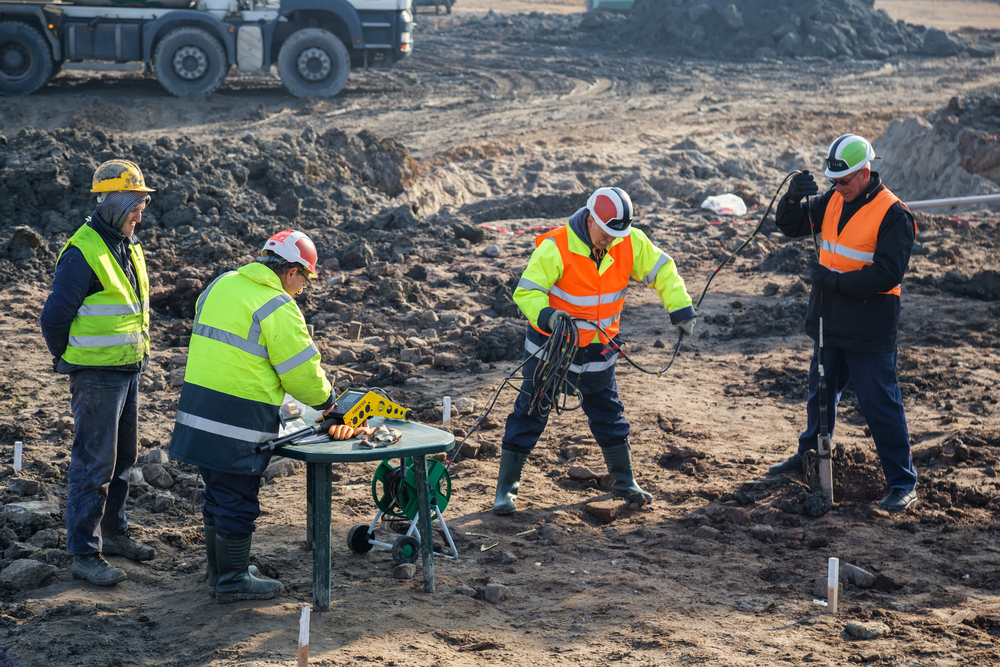Tailings Engineer: Necessary Experience for Lasting Waste Administration in Mining
Tailings Engineer: Necessary Experience for Lasting Waste Administration in Mining
Blog Article
Checking Out the Ingenious Strategies and Technologies Forming the Future of the Geotechnical Sector for Sustainable Engineering Solutions
The geotechnical market is going through a transformative change, driven by cutting-edge methods and technologies that highlight sustainable design services. Advanced soil stablizing methods, making use of smart products, and the application of information analytics are redefining how we come close to facilities challenges. As these innovations promote environmental stewardship, they also raise vital questions regarding their practical implementation and long-term efficiency. Understanding the interplay in between these developments and their possible to transform the area invites more expedition right into the future of sustainable design techniques.
Advanced Soil Stabilization Techniques
Soil stablizing is an essential procedure in geotechnical design, targeted at improving the physical residential properties of soil to improve its load-bearing ability and toughness. Advanced dirt stablizing strategies play an essential function in attending to obstacles connected with unsteady or weak soils, consequently enabling secure and reliable construction practices.
Amongst the prominent methods, chemical stablizing entails using additives such as lime, cement, or fly ash, which respond with soil fragments to create an extra natural mass. This technique is particularly reliable in boosting the stamina and dampness resistance of large clay soils. Mechanical stabilization, on the various other hand, involves the physical modification of soil residential or commercial properties via compaction or the unification of granular products, resulting in enhanced thickness and security.
Another ingenious technique is making use of geosynthetics, which give reinforcement and reduce soil erosion while enhancing drainage. Strategies like dirt blending and deep soil stablizing are additionally gaining traction, enabling for in-situ treatment of troublesome soils. Jointly, these innovative methods not only improve the performance of dirt frameworks but also add to lasting engineering techniques by lessening the demand for extensive excavation and material transportation.
Smart Products in Geotechnics
Technology goes to the center of geotechnical engineering, specifically with the unification of smart products that boost the performance and capability of soil frameworks. Smart materials, such as form memory alloys, piezoelectric materials, and self-healing polymers, are transforming the means engineers approach dirt stabilization and facilities long life (geo tech engineer). These materials can adjust to transforming ecological conditions, react to stress and anxiety, and even fix themselves, considerably enhancing the durability of geotechnical systems
For example, piezoelectric products can create electrical costs in feedback to mechanical anxiety, supplying prospective for real-time surveillance of soil conditions and architectural honesty. Self-healing products can autonomously fix splits and damages, minimizing upkeep expenses and prolonging the life expectancy of geotechnical possessions. The combination of these smart materials not only boosts the mechanical residential properties of dirt but additionally contributes to lasting engineering techniques by reducing resource usage and ecological influence.
As the geotechnical sector remains to evolve, the adoption of wise products will play a vital function in creating cutting-edge options, making certain that frameworks are not only durable however also adaptable to future challenges. This transformative strategy is positioned to redefine the requirements of safety and performance in geotechnical design.
Information Analytics for Facilities
The combination of clever products in geotechnical engineering has actually led the way for innovative methodologies, particularly in the realm of data analytics for framework. This innovative technique leverages comprehensive data collection and analytical strategies to boost decision-making procedures throughout the framework lifecycle. By utilizing sensing units embedded in clever materials, engineers can continuously monitor crucial criteria such as dirt stability, moisture levels, and structural integrity.
Information analytics makes it possible for the transformation of raw data into workable understandings, allowing for predictive upkeep and improved risk administration. Advanced formulas and device understanding strategies help with the identification of anomalies and patterns, which can educate timely interventions and optimize source appropriation. Additionally, integrating geographic info systems (GIS) boosts spatial analysis, more improving the decision-making structure.
By utilizing the power of information analytics, the geotechnical sector is placed to not just boost existing methods however likewise pioneer innovative remedies for future framework obstacles. This synergy of technology and engineering concepts will certainly define the future of lasting framework development.

Sustainable Ground Renovation Techniques
Various sustainable ground renovation approaches are becoming important remedies to resolve the obstacles of geotechnical engineering while minimizing ecological impact. These methods not only improve soil efficiency but additionally advertise eco-friendly stewardship by lowering reliance on traditional, a lot more intrusive methods.

Another ingenious technique is the application of geosynthetics, which includes eco-friendly products that enhance soil while advertising drainage and disintegration control - tailings engineer. This lowers the requirement for hefty machinery and lessens site disturbance, hence maintaining neighborhood communities
Furthermore, strategies such as dynamic compaction and vibro-replacement have actually evolved to consist of sustainable practices, including recycled materials and lowering carbon footprints. These techniques exhibit the sector's shift in the direction of more ecologically accountable options, guaranteeing that ground improvement not just fulfills design needs but also adds positively to the surrounding setting.
Technologies in Environmental Tracking
In the last few years, improvements in environmental monitoring have substantially enhanced the capacity to analyze tailings engineer and handle geotechnical jobs with minimal environmental disturbance. Innovative technologies, such as remote sensing, Net of Points (IoT) devices, and real-time data analytics, are changing just how environmental impacts are measured and reduced.
Remote sensing innovations, including satellite images and airborne LiDAR, facilitate the quick evaluation of land usage adjustments and environmental conditions - consulting engineer. These tools permit for continuous monitoring of websites, allowing designers to determine prospective concerns before they escalate. Additionally, IoT devices, geared up with sensing units for parameters like soil temperature level, gas, and moisture emissions, offer online data streams that boost the understanding of site-specific ecological variables
Real-time data analytics further improve decision-making procedures by integrating data from different sources, allowing for positive management strategies. This alternative strategy not only guarantees compliance with ecological policies yet additionally advertises sustainable practices within the geotechnical market.
As these developments remain to advance, they hold the possible to connect the gap between design purposes and environmental stewardship, cultivating a much more lasting future for geotechnical jobs worldwide.
Verdict
To conclude, the geotechnical industry is going through a transformative evolution driven by cutting-edge techniques and technologies that prioritize sustainability. Advanced soil stablizing methods, the integration of wise products, and the application of information analytics collectively boost the resilience and efficiency of infrastructure. Furthermore, sustainable ground improvement methods and advancements in environmental surveillance emphasize the industry's dedication to ecological stewardship. These advancements not only address contemporary engineering challenges yet likewise pave the method for an extra sustainable future in geotechnical practices.
Techniques like dirt blending and deep soil stabilization are also getting grip, allowing for in-situ treatment of troublesome soils. Jointly, these advanced techniques not just boost the efficiency of dirt frameworks yet additionally contribute to sustainable design methods by minimizing the demand for substantial excavation and product transport.

Report this page